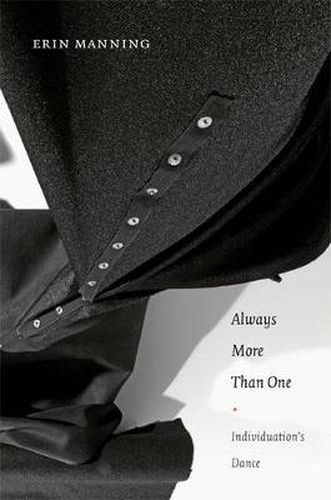Readings Newsletter
Become a Readings Member to make your shopping experience even easier.
Sign in or sign up for free!
You’re not far away from qualifying for FREE standard shipping within Australia
You’ve qualified for FREE standard shipping within Australia
The cart is loading…






In Always More Than One, the philosopher, visual artist, and dancer Erin Manning explores the concept of the more than human in the context of movement, perception, and experience. Working from Whitehead’s process philosophy and Simondon’s theory of individuation, she extends the concepts of movement and relation developed in her earlier work toward the notion of choreographic thinking. Here, she uses choreographic thinking to explore a mode of perception prior to the settling of experience into established categories. Manning connects this to the concept of autistic perception, described by autistics as the awareness of a relational field prior to the so-called neurotypical tendency to chunk experience into predetermined subjects and objects. Autistics explain that, rather than immediately distinguishing objects-such as chairs and tables and humans-from one another on entering a given environment, they experience the environment as gradually taking form. Manning maintains that this mode of awareness underlies all perception. What we perceive is never first a subject or an object, but an ecology. From this vantage point, she proposes that we consider an ecological politics where movement and relation take precedence over predefined categories, such as the neurotypical and the neurodiverse, or the human and the nonhuman. What would it mean to embrace an ecological politics of collective individuation?
$9.00 standard shipping within Australia
FREE standard shipping within Australia for orders over $100.00
Express & International shipping calculated at checkout
In Always More Than One, the philosopher, visual artist, and dancer Erin Manning explores the concept of the more than human in the context of movement, perception, and experience. Working from Whitehead’s process philosophy and Simondon’s theory of individuation, she extends the concepts of movement and relation developed in her earlier work toward the notion of choreographic thinking. Here, she uses choreographic thinking to explore a mode of perception prior to the settling of experience into established categories. Manning connects this to the concept of autistic perception, described by autistics as the awareness of a relational field prior to the so-called neurotypical tendency to chunk experience into predetermined subjects and objects. Autistics explain that, rather than immediately distinguishing objects-such as chairs and tables and humans-from one another on entering a given environment, they experience the environment as gradually taking form. Manning maintains that this mode of awareness underlies all perception. What we perceive is never first a subject or an object, but an ecology. From this vantage point, she proposes that we consider an ecological politics where movement and relation take precedence over predefined categories, such as the neurotypical and the neurodiverse, or the human and the nonhuman. What would it mean to embrace an ecological politics of collective individuation?